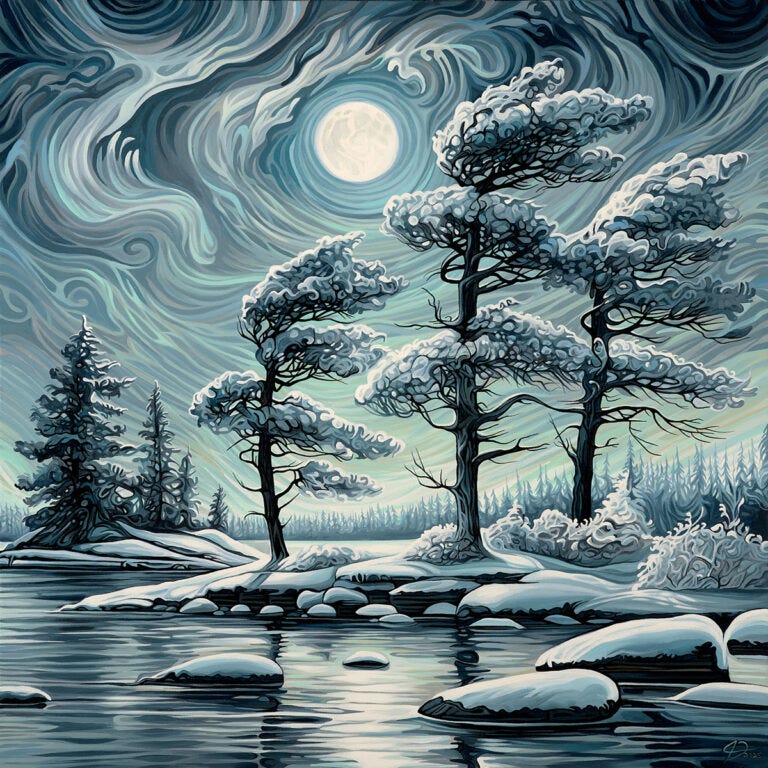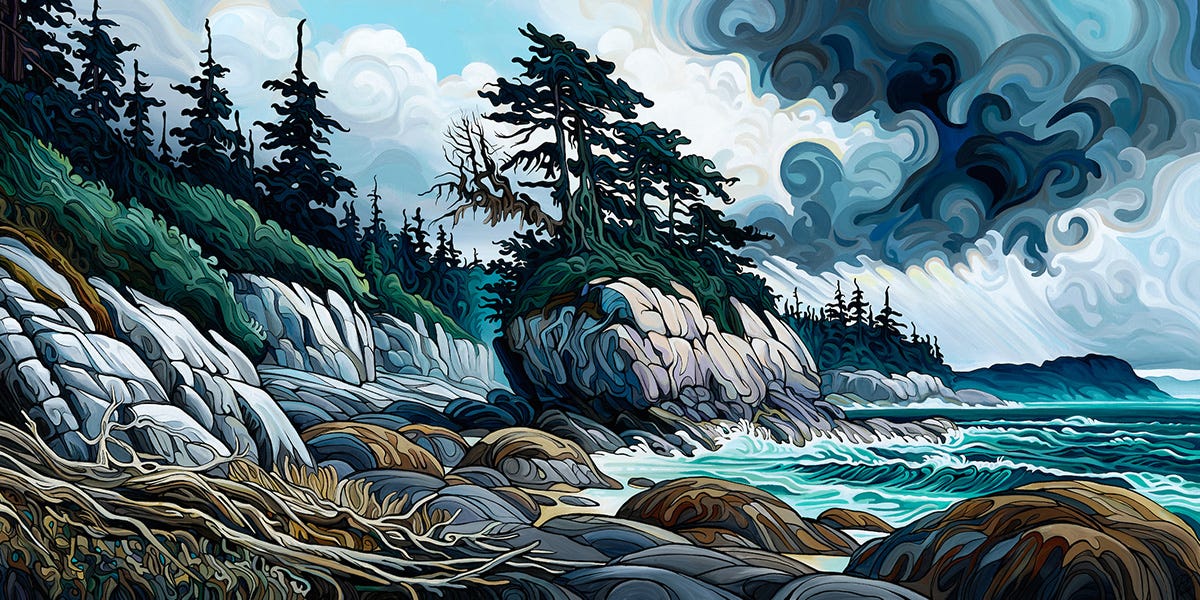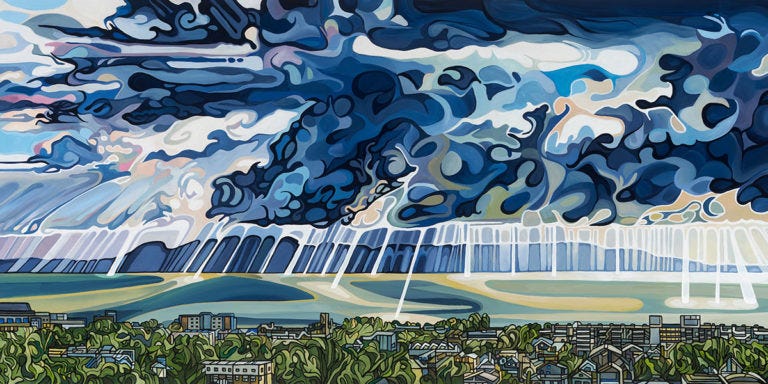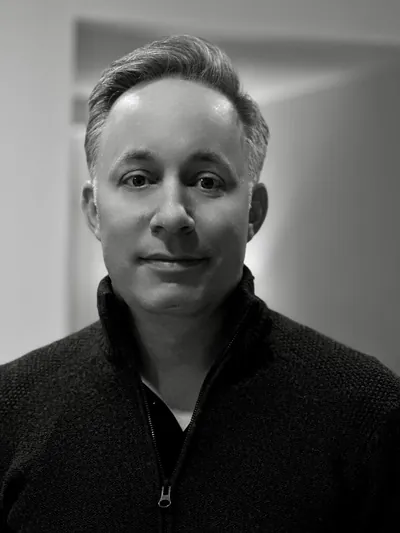A painting isn’t static. It’s built through movement, shaped by decisions, and continues to live beyond the studio.
One thing I’ve always noticed about nature is that nothing holds still for long. Trees shift with the wind. Light moves across rock. Water reshapes itself by the second. Whether I’m standing on a shoreline or walking through the woods, my eye keeps moving. That constant motion is something I pay attention to, and it’s what I try to carry into my paintings.
#291 – “Everlasting Bond”, 24” x 24″, Original painting by Jeff Dillon
In the studio, I build each composition so the eye keeps travelling. Shapes lead into one another. Edges curve. Colour moves across the canvas in a way that mimics how things unfold in nature. I spend time adjusting the layout until there’s a rhythm. Something that feels balanced but alive. It’s not about creating a perfect scene. It’s about creating flow. That’s the point when the painting starts to take on a life of its own. Once I sense that, I find my focus and keep going with more clarity. The noise drops out. I paint quietly for hours, days, or weeks, sometimes without realizing how much time has passed.
I don’t paint from specific memories. What I’m after is the kind of focus I get when I’m outside and fully present. It’s that calm awareness you feel when you slow down and start to notice how everything fits together. That connection, the way light, land, and movement relate, is what I try to bring into the work. It’s less about the subject and more about the energy that moves between the parts.
Most paintings hit a stage where nothing feels like it’s working. The shapes feel off, the colours compete instead of complementing each other, and the whole thing starts to feel unsettled. I keep adjusting the lines, shifting the balance, and layering until the composition starts to come together. That middle stretch is always the most uncertain. It’s where doubt creeps in, and it can be frustrating. But I’ve learned not to stop there. I finish every piece I start, even when I’m unsure of where it’s going. In almost every case, that feeling of completion doesn’t show up until the end. That’s when I can finally see what the painting was working toward the whole time.
#279 – Weathering Life’s Storms”, 20″ x 40″, Original painting by Jeff Dillon
When I first started painting, I used black lines to define everything. That helped me understand structure and space. It was a way to break things down and rebuild them. Over time, that changed. Now the linework blends into the painting or steps back altogether, depending on what the piece needs. Sometimes the lines are strong and deliberate. Other times, they disappear completely, replaced by changes in tone or texture. I let the painting guide that decision.
Since moving to full-time painting three years ago, I’ve had the space to take on more layered, thoughtful work. The pace hasn’t increased, but the depth has. I’m working on larger canvases, building more complex compositions, and spending more time developing each idea. That time in the studio has shaped the way my style has evolved. It’s not about producing more, but about approaching each piece with more focus and intention. I let the work unfold at its own pace, and that space has made the paintings stronger.
When people stand in front of my work, I hope they feel the same quiet focus I get from being in nature. I want them to sense the movement, the connection between all the elements. It’s not just trees and rocks and skies. It’s how they all relate, how they lean into each other and move as one. That’s the part I care about most. When a viewer tells me they feel like they’ve been there, even if they haven’t, I know the painting has done its job.
There’s no fixed path when I paint. What starts as a clear idea can shift halfway through. Some decisions feel right immediately. Others take time. I’ll rework a section again and again until it sits properly within the composition. That back-and-forth is part of it. The work changes as I go, and I adjust with it. I’ve learned not to expect it to unfold in a straight line.
#196 – “Grounding”, 30″ x 60″, Original painting by Jeff Dillon
Every painting brings its own set of problems to solve. How do the forms connect? Is the movement working? Does the energy hold across the canvas? These are the kinds of questions I find myself asking, often deep into the process. Finishing a piece doesn’t mean everything is tied up neatly. It just means I’ve pushed it as far as it can go.
That process of figuring things out, shaping the work, responding to it, and seeing where it leads is what keeps the job interesting. I don’t paint to repeat something I’ve already done. I paint to find out what’s possible inside each new composition.
Join me on Substack as I share new work, studio updates, and reflections on the creative process. Thank you for reading and for being part of this journey. To see more of my work or browse originals and prints, visit www.JeffDillon.ca







